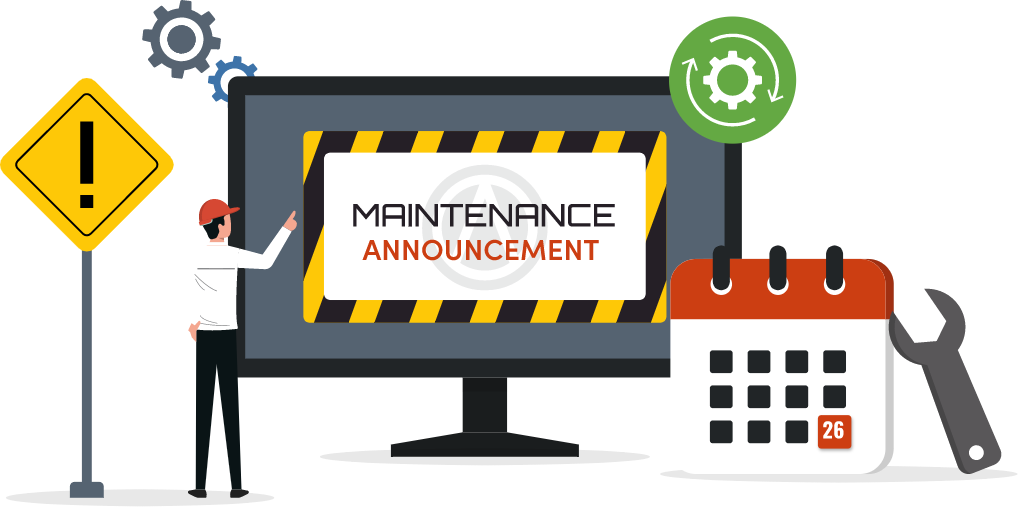How can technology improve the onboarding process?
Technology standardizes training, provides clarity for employees, tracks progress, and reduces administrative workload. Digital tools ensure every employee receives the same consistent information and support.
How to Use Technology to Streamline Your Restaurant's On-Boarding Process
High Turnover Rates in the Restaurant Industry
Running a restaurant is fast-paced, and every team member plays a vital role in keeping operations smooth. But bringing new employees into that environment can be a challenge. Many restaurant owners face the reality of high turnover, with industry reports showing that annual turnover rates often exceed 70%. Every time a new hire walks through the door, there's both opportunity and risk- a chance to add a valuable team member, but also the possibility of wasted time and training if the onboarding process is unclear or inconsistent.
A well-structured process ensures that new hires feel confident, understand expectations, and can contribute quickly to the team. When onboarding is rushed or disorganized, mistakes multiply- employees may miss safety steps, service quality suffers, and managers spend more time correcting errors instead of focusing on growth.
This is where technology can make a real difference. By replacing manual, paper-heavy steps with digital tools, restaurant owners can save time, reduce stress, and create a consistent experience for every new employee. Technology doesn't replace the personal touch of training, but it enhances it - making sure nothing is overlooked and everyone starts off on the right foot.
The Hidden Costs of a Disorganized On-Boarding Process

For many restaurant owners, the on-boarding process often feels like something that can be done "on the fly." A quick orientation, a stack of forms, and a rushed training session may seem enough to get a new hire started. But the reality is that disorganized on-boarding comes with significant hidden costs - costs that often go unnoticed until they pile up.
One of the most immediate expenses is turnover. Studies in the restaurant industry suggest that replacing a single front-line employee can cost anywhere from $3,000 to $5,000 when factoring in recruitment, training, and lost productivity. Multiply that by several employees leaving within a year, and the numbers become staggering. Often, turnover isn't caused by the work itself but by new hires feeling overwhelmed, unsupported, or unclear about their responsibilities - all issues that stem from poor on-boarding.
Another cost comes in the form of errors and inefficiencies. Employees who don't receive clear training from day one are more likely to make mistakes, whether that's mishandling food, forgetting safety procedures, or providing inconsistent customer service. These mistakes don't just impact daily operations; they also affect the guest experience. One wrong order or one unpleasant interaction can cause a customer not to return - and the cost of losing repeat business can be far greater than the initial training investment.
There's also the burden on management and senior staff. When on-boarding is incomplete, managers spend extra hours correcting mistakes, retraining employees, and handling compliance paperwork that was overlooked. This eats into valuable time that could have been spent improving operations or engaging with guests.
When viewed together, these hidden costs demonstrate why investing in a streamlined, technology-supported on-boarding process isn't just about efficiency - it's about protecting profits, improving employee morale, and building a restaurant that runs smoothly even under pressure.
Role of Technology in Modern On-Boarding
Restaurants operate in a world where speed and consistency matter just as much as flavor and hospitality. That's why the traditional on-boarding process - stacks of paper forms, verbal instructions, and scattered training - often falls short. Technology now plays a central role in fixing those gaps, making on-boarding smoother, faster, and more reliable for both employees and managers.
The main advantage of technology is standardization. Every new hire receives the same set of instructions, the same documents, and the same training flow. This consistency ensures that nothing is left to memory or chance. For example, if a manager forgets to cover food safety protocols with one employee but not another, the result can be uneven performance. Digital on-boarding eliminates that risk by ensuring each step is built into the process.
Technology also provides accessibility and convenience. Instead of spending the first day bogged down in paperwork, employees can complete certain on-boarding steps before they even step into the restaurant. This not only saves time on their first shift but also helps them arrive more prepared. For managers, it reduces the stress of managing piles of forms or answering the same basic questions over and over.
Another important benefit is tracking and accountability. Digital tools allow owners and managers to see exactly where a new employee is in the on-boarding process. Has the safety form been signed? Has the customer service video been completed? Instead of guessing, managers have a clear record, which reduces compliance risks and ensures training is actually completed.
In short, technology doesn't replace the human side of training - it enhances it. By handling the repetitive and administrative tasks, digital tools free managers to focus on building relationships with new hires and integrating them into the restaurant culture.
Digital Checklists for Clarity and Consistency
One of the simplest yet most effective ways to streamline on-boarding in a restaurant is through digital checklists. At first glance, a checklist may seem basic, but when moved into a digital format, it becomes a powerful tool for organization, accountability, and consistency.
In a busy restaurant environment, managers juggle multiple responsibilities at once - scheduling shifts, managing inventory, and serving guests. It's easy for parts of the on-boarding process to slip through the cracks. A digital checklist ensures that nothing is forgotten. Every step, from filling out tax forms to reviewing food safety procedures, can be listed in order and checked off as it's completed. This creates a structured road-map for both the new employee and the manager, reducing confusion and ensuring all critical steps are covered.
For new hires, digital checklists provide clarity. Instead of feeling overwhelmed by a flood of instructions, they can see exactly what's expected of them and track their own progress. This builds confidence and gives employees a sense of accomplishment as they move through the list. For managers, digital checklists provide consistency - every employee receives the same on-boarding experience, no matter who is training them or how busy the restaurant is that day.
Another benefit is record-keeping. Unlike paper checklists that can get lost, digital versions are stored and accessible for future reference. This is especially valuable for compliance, as managers can show proof that training steps and safety protocols were reviewed.
E-Signatures for Faster Compliance and Reduced Paperwork

Paperwork is one of the least enjoyable parts of on-boarding - for both managers and employees. From contracts and tax documents to food safety acknowledgments and workplace policies, a mountain of forms often greets new hires on their first day. Not only is this overwhelming, but it also eats into valuable time that could be spent learning the job. This is where e-signatures can transform the process, turning what was once a bottleneck into a seamless step.
For restaurant owners, e-signatures mean efficiency. Instead of printing, scanning, and storing stacks of paper, documents can be signed digitally and stored securely. This saves both physical space and administrative hours. It also reduces the common errors that occur with manual paperwork - like missing signatures, lost forms, or incomplete fields - that can create compliance issues later.
From an employee's perspective, e-signatures simplify the first-day experience. Instead of facing a pile of forms during orientation, much of the paperwork can be completed ahead of time on a smartphone, tablet, or computer. This helps new hires walk in on their first day ready to focus on training and building confidence in their role, rather than being bogged down with paperwork.
There's also a clear compliance benefit. Restaurants must meet labor law requirements, maintain signed safety acknowledgments, and keep employment records organized. Digital systems with e-signatures provide a secure and easily retrievable record, ensuring that the restaurant stays in line with regulations. This reduces the risk of costly fines or disputes.
Training Videos for Scalable Learning
Training new employees in restaurants often depends on who is available and how much time they can dedicate. While shadowing and hands-on practice are important, relying only on in-person training can lead to uneven results. Training videos help solve this problem by delivering consistent, repeatable information that every new hire can access. Here are the key benefits -
1. Consistency Across All Employees
Training videos ensure that every new hire receives the same instruction, no matter who is training them or how busy the shift is. This removes gaps or missed steps that often occur with verbal-only training.
2. Scalability Without Extra Work
Once created, a video can be used for every new employee. This saves managers from repeating the same lessons over and over while still ensuring quality instruction.
3. Support for Different Learning Styles
Not every employee learns best in the same way. Some prefer hands-on practice, while others need to see and hear instructions. Videos provide visual demonstrations that can be replayed anytime, allowing employees to learn at their own pace.
4. Better Use of Management's Time
With videos covering the basics, managers and senior staff can focus on higher-value tasks such as mentoring, answering questions, and integrating new hires into the restaurant culture.
5. Reduced Errors and Safer Practices
By reinforcing critical skills - like food safety or cleaning procedures - videos help employees retain important information and reduce mistakes that can affect operations and customer satisfaction.
In short, training videos don't replace human trainers; they strengthen the process. They give every new hire the same foundation while freeing managers to focus on what matters most- building skills, confidence, and teamwork.
Integrating Technology Into the First Week
The first week of employment sets the tone for how a new hire will perform and whether they will stay. If on-boarding feels rushed, confusing, or incomplete, employees may feel unprepared and discouraged. On the other hand, a well-structured first week - supported by technology - can build confidence, reduce mistakes, and help employees feel like valued members of the team from the start.
Here's how technology can be integrated into the first week to make on-boarding smoother and more effective -
1. Day One Orientation
Use digital checklists and e-signatures to handle paperwork quickly and efficiently. Instead of spending hours filling out forms, employees can complete these steps digitally, leaving more time for introductions, a restaurant tour, and meeting the team.
2. Core Training Modules
Assign training videos that cover essential topics such as food safety, customer service expectations, and basic role responsibilities. This ensures every employee gets the same foundational knowledge before moving into hands-on practice.
3. Role-Specific Practice
Technology can guide this stage by providing digital task lists or quick-reference resources on mobile devices or tablets. Employees can review steps as they shadow experienced team members, reinforcing what they've learned.
4. Progress Tracking
Managers can use digital tracking tools to monitor what's been completed and what still needs attention. This prevents gaps in training and ensures no critical step is overlooked during the first week.
By blending digital tools with personal coaching, restaurants create a structured and supportive on-boarding journey. Employees know what's expected, managers save time, and the entire team benefits from a smoother transition. Ultimately, integrating technology into the first week isn't about replacing human interaction - it's about giving it more room to thrive.
Building a Future-Ready On-Boarding Process
On-boarding is more than just a series of tasks - it's the foundation of a successful restaurant team. When done thoughtfully, it reduces turnover, improves service quality, and helps new hires feel confident and supported. Technology plays a crucial role in making this process efficient, consistent, and scalable. From digital checklists and e-signatures to training videos and progress tracking, each tool contributes to a smoother experience for both employees and managers.
Investing in a streamlined, technology-supported on-boarding process isn't just about saving time - it's about creating a culture where new hires feel prepared, valued, and motivated from day one. Restaurants that embrace these tools can reduce errors, maintain compliance, and allow managers to focus on coaching and building strong teams.
For restaurant owners ready to modernize their on-boarding process, Altametrics offers a simple and powerful platform to manage all aspects of employee on-boarding in one place. With Altametrics, you can digitize forms, track progress, and provide clear guidance for every new hire, making on-boarding faster, smoother, and more effective.
Take the first step toward a future-ready on-boarding process - explore Altametrics today by clicking "Request a Demo" below.
Must-Read Content

Creating a Hospitality On-Boarding Program That Reflects Your Brand


New Employee Onboarding Checklist for Restaurant Owners











